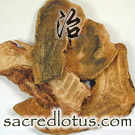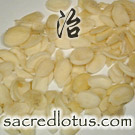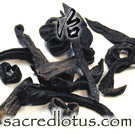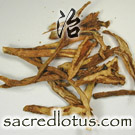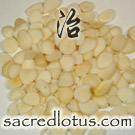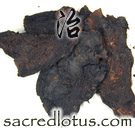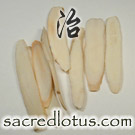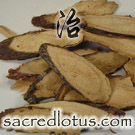Da Huang Zhe Chong Wan (Rhubarb and Eupolyphaga Pill)
Formula 5 of 13 in Formulas that Invigorate the Blood
Buy This Formula
Get free shipping from
our partners at CHD
our partners at CHD
Sub-Category:
- Formulas that Invigorate the Blood and Dispel Blood Stasis
Pattern:
- Blood Stagnation and Dry Blood (Gan Xue)
Actions:
- Invigorates Blood, Tonifies Qi, and Opens the Channels
Cautions, Contraindications, Herb Drug Interactions:
- Do not use during pregnancy
Preparation Notes:
- Pills. Grind all herbs into an even powder and use honey to form into 3 gram pills.
- Take a 3 gram pill, 1-3 times a day with warm water or wine.
- Appropriately reduce dosages to prepare a decoction.
Originally Appeared In:
- Essentials from the Golden Cabinet (Jin Gui Yao Lue)
Notes:
- Dry Blood (Gan Xue), one of the five consumptions (Wu Lao), involves Blood Stagnation generating heat, and over time, injury to the Blood and Yin, so they can no longer nourish and moisten the muscles and skin.
Combined Channels of all herbs in this formula:
- Large Intestine, Stomach, Heart, Liver, Spleen, Bladder, Lungs, Gall Bladder, Kidneys
There are 12 Substances in this Chinese Medicne
Da Huang (Rhubarb Root and Rhizome)Quantity = 300 grams
Quantity = 30 grams
Quantity = 60 grams
Quantity = 30 grams
Quantity = 60 grams Shui Zhi (Leech)
Quantity = 60 grams
Quantity = 60 grams Huang Qin (Baical Skullcap Root)
Quantity = 60 grams
Quantity = 60 grams
Quantity = 300 grams
Quantity = 120 grams
Quantity = 90 grams
Find Similar Chinese Formulas
Sacred Lotus can compare the Chinese herbs in this formula to all other formulas on the website. Formula archetypes will list of formulas that have similar herbs, ranked by the number of herbs that match:
Get Formula Archetypes


